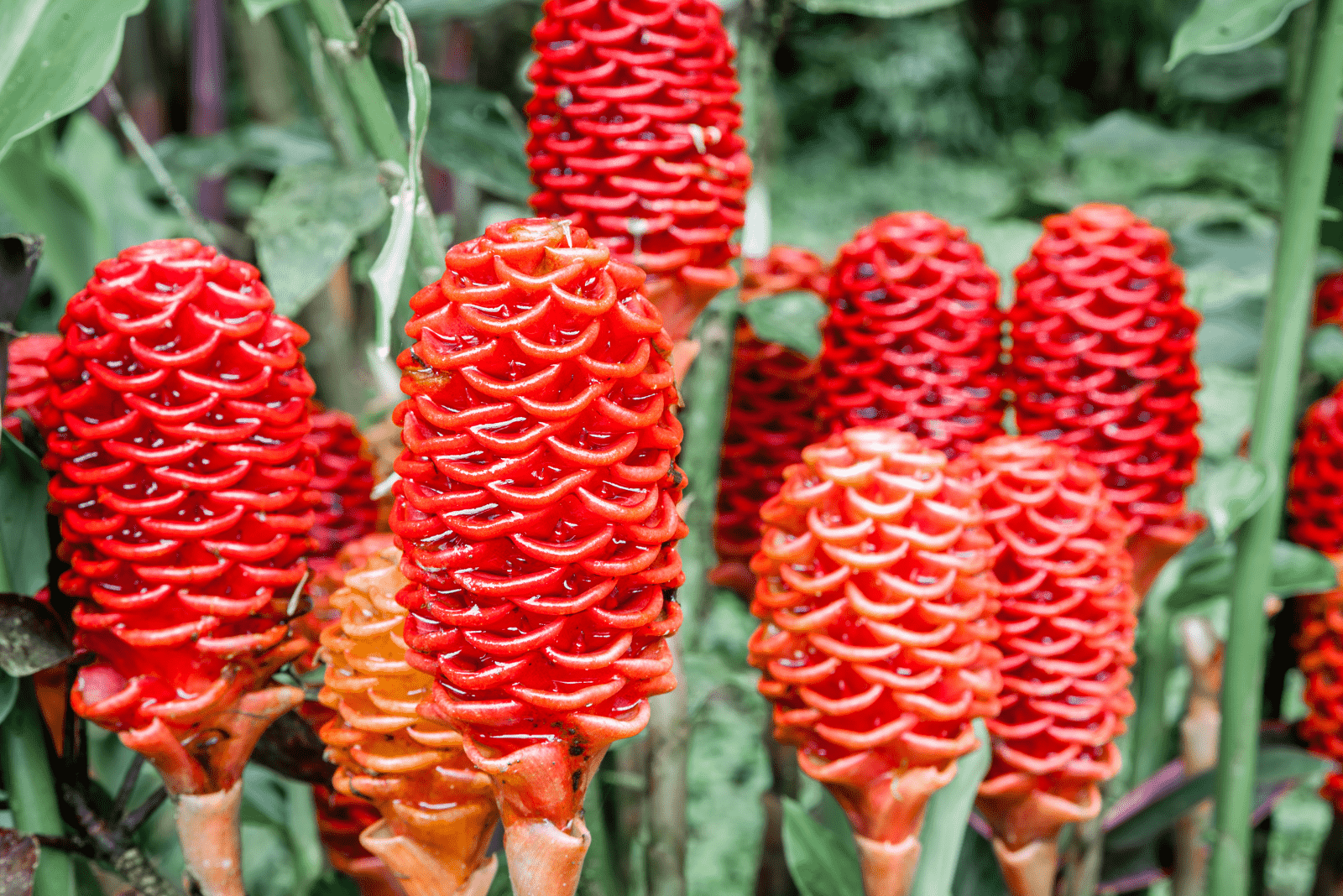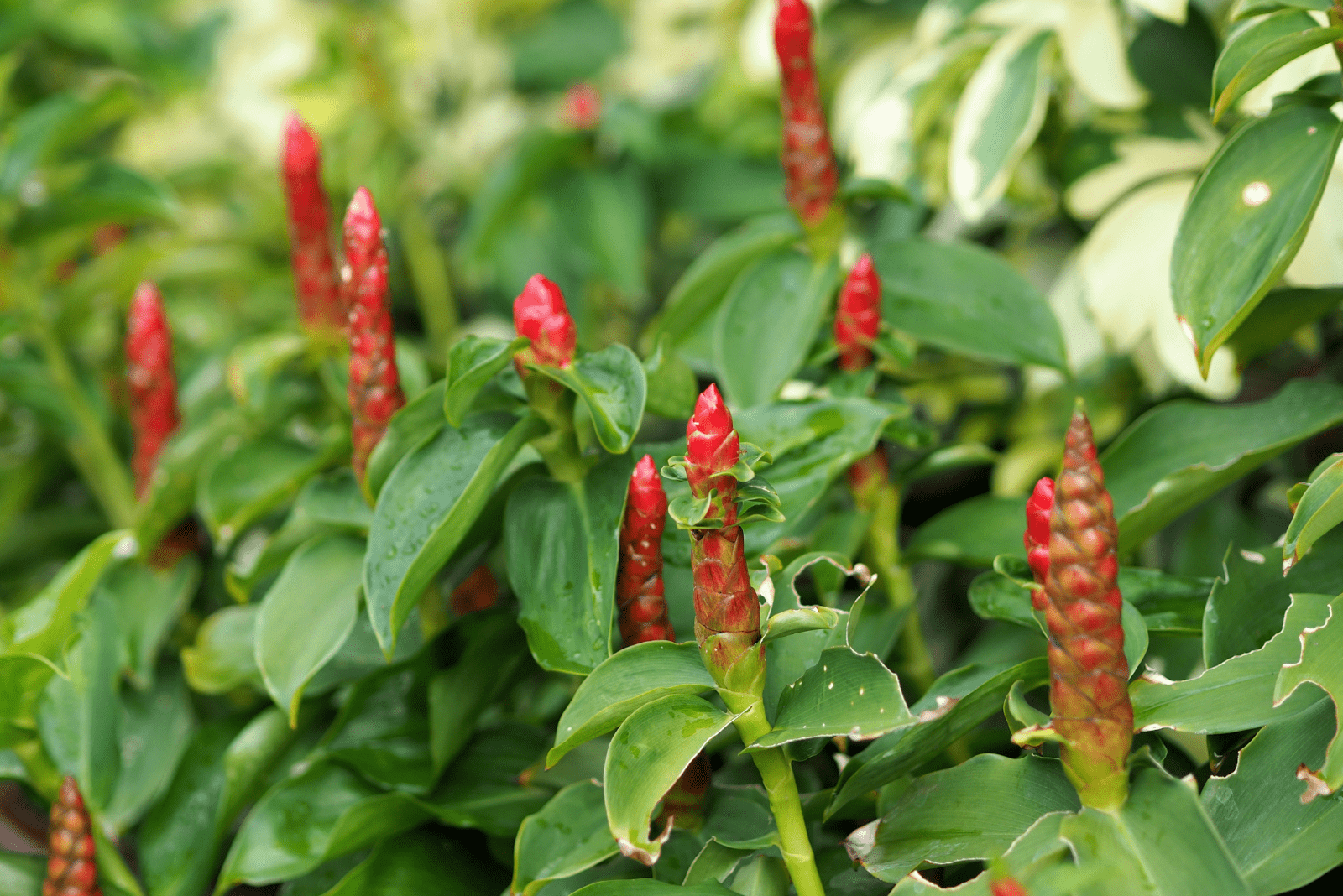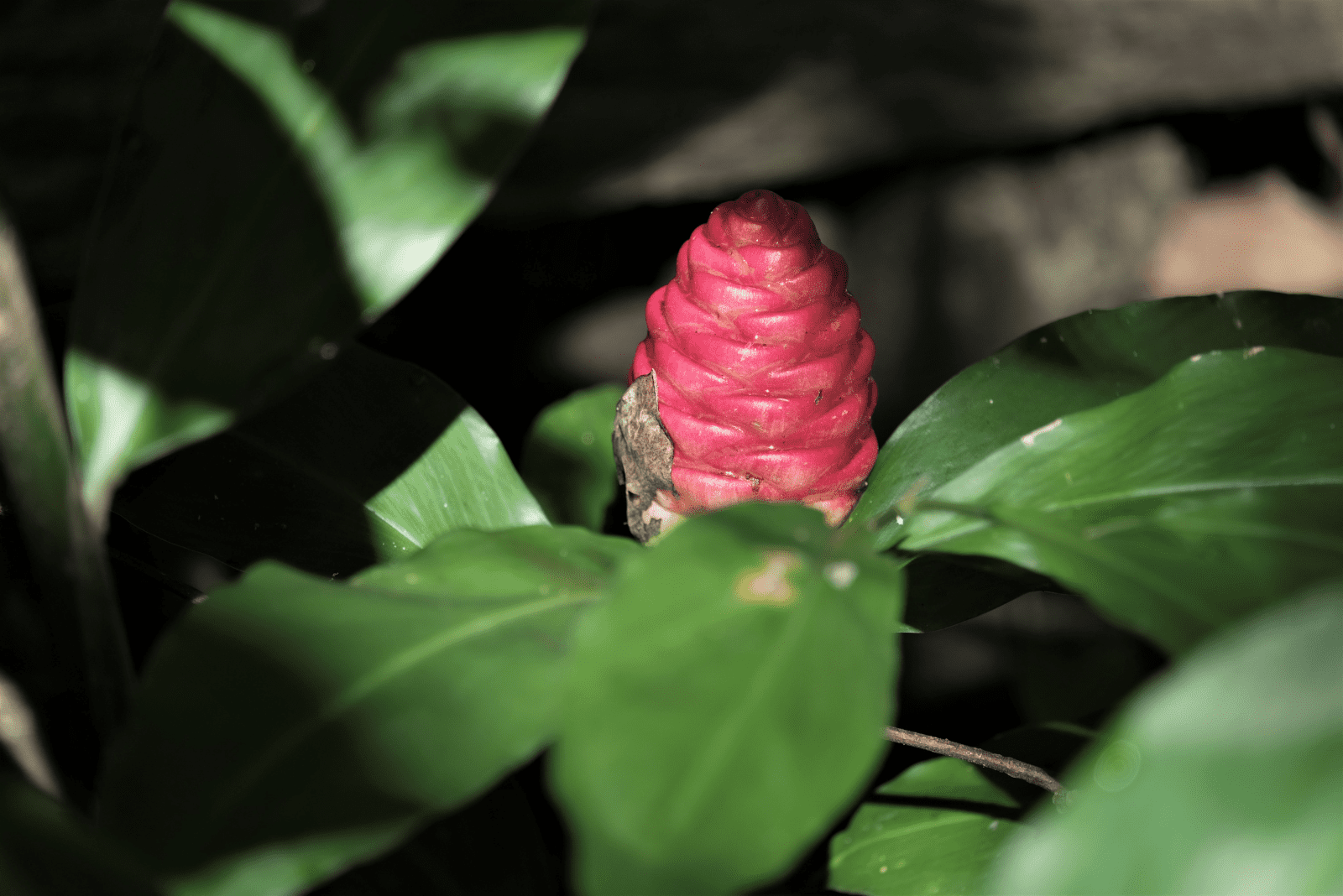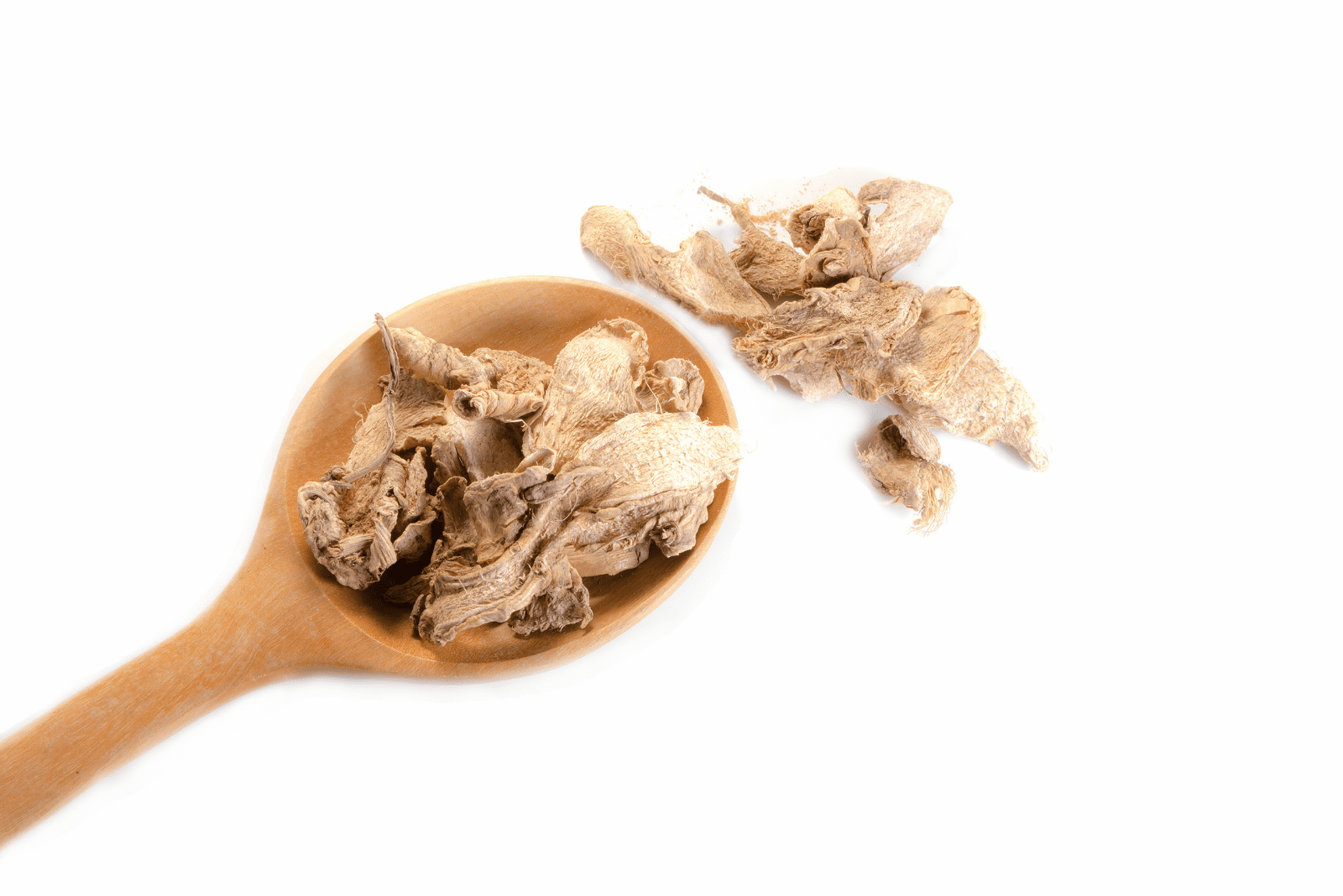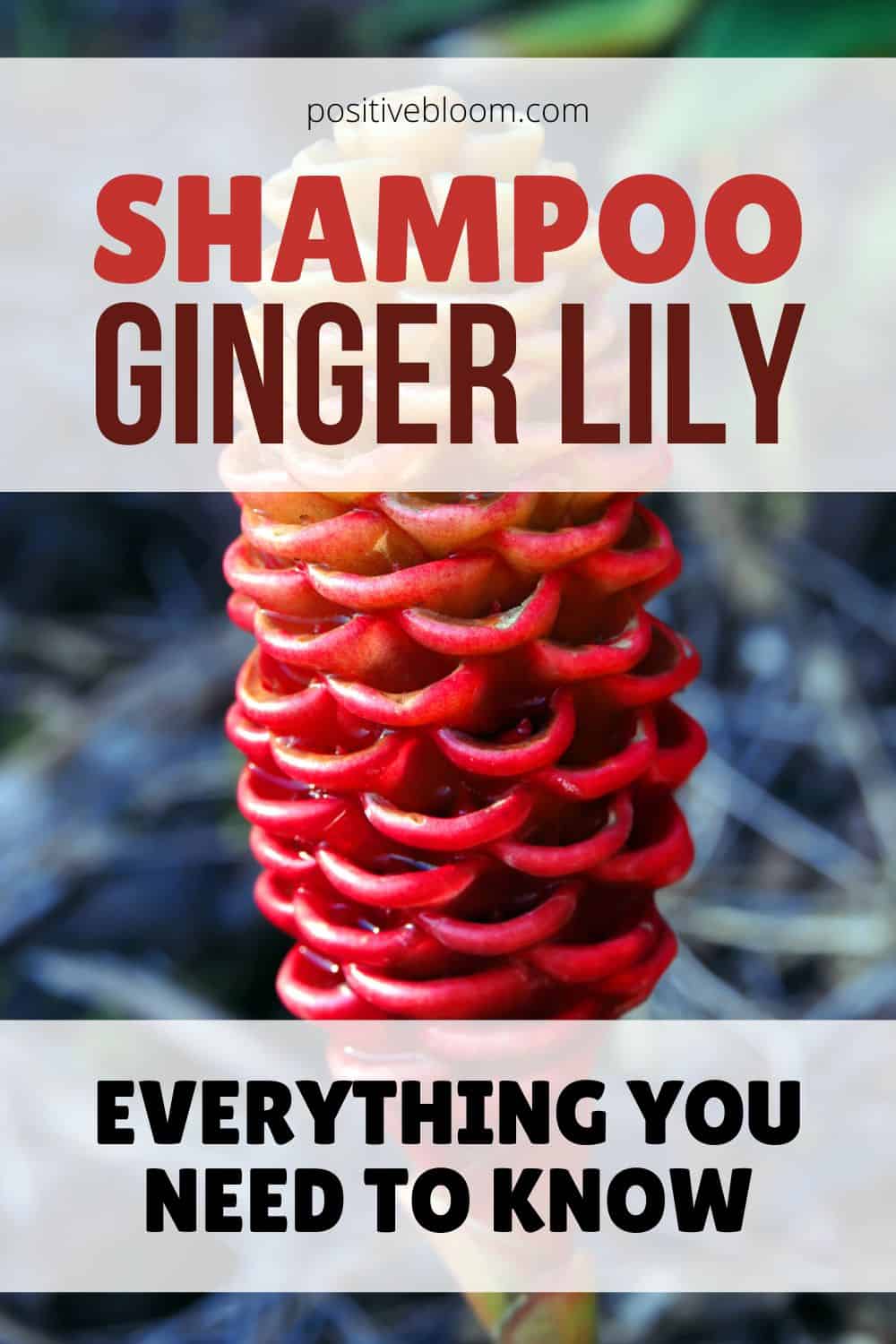When we say the word “shampoo,” we don’t usually picture a plant with a red, pinecone-like inflorescence, but it exists!
And that’s exactly what we’re here to talk about: the shampoo ginger lily.
In this article, we’ll discuss the main facts about this plant, its features, and how to care for it. However, this lily is called a “shampoo plant” for a reason, so we’ll also introduce some of its benefits and practical uses.
Before we get into all that, let’s learn some basics about this plant:
[table id=319 /]
Facts About The Shampoo Ginger Lily
This plant is a member of the ginger family, also known as Zingiberaceae, so it’s not surprising that it has so many names with the term “ginger” in them.
It has quite a few common names, including pinecone ginger, red pinecone ginger, wild ginger, beehive ginger plant, bitter ginger, awapuhi plant, awapuhi kuahiwi, amomum zerumbet, and shampoo plant.
It is a herbaceous, tropical plant native to Asia, and Polynesian settlers brought it to Hawaii, where it found its new home.
It wasn’t very popular until Paul Mitchell started his hair product line in 1983.
However, you can also use it fresh as it has many health benefits, which we’ll discuss later in this article.
Zingiber Zerumbet: Features
The flowers, foliage, and rhizomes are the most interesting characteristics of this plant. The wild ginger inflorescence bears the flower head from which we get the precious gel, but the rhizomes also have practical uses and produce new shoots and roots that keep the plant alive.
Of course, the leaves are in charge of photosynthesis, without which the plant would not have enough food or energy to continue its growth and development.
We must mention one thing before discussing these three features: the stem. Without the stems, there would be no flowers or leaves.
Bitter ginger stalks have an upright growth habit, can reach a height between 3-6.5 feet tall, and are round in shape.
They are also variegated, and you can find green-brown parts that turn more orange as they grow into flower heads.
Flowers
The most prominent feature of this plant is the red inflorescence, which is 2-4 inches long and appears in the late summer. The flower head resembles a pine cone, starts off green, and only later adorns itself in bright red colors.
The green pine cone is wrapped in bracts, each of which bears a white blossom as it gets older.
Once it matures, the inflorescence releases a creamy, pale orange liquid, which has many practical uses in hair and skincare.
Shampoo ginger lily seeds are a rarity, but the plant will still produce them. They are black and ellipsoid in shape and can be used for propagation.
The shampoo ginger lily smells sweet and is located in the plant’s flowers and rhizomes. These parts are very fragrant, and the warm scent of ginger can be smelled from far away.
Leaves
However, the red flowers aren’t the only exciting thing about this plant. The foliage is traditionally green, but there are varieties with variegated leaves that will add more depth to your garden design.
The foliage is thin and 10-14 inches long, but there is another feature that makes them even more special; a purplish color can sometimes appear beneath the young shoots.
Rhizomes
Even though all these features are eye-catching, the most interesting things are definitely the shampoo ginger rhizomes, which are underground stems that have yellow insides and send up new shoots and roots.
They are thought to possess some medicinal properties (which we’ll talk about in the last section of this article), but we usually use them for propagation.
How To Grow The Shampoo Ginger Plant
Now that you know the basics about pinecone ginger, it’s time to learn how to cultivate it. The main things you need to look out for are the amount of light and water you give it.
There are a couple of other things you should be aware of before growing this plant. For instance, it can be grown as both an outdoor plant and a houseplant, but you need to ensure that your USDA zone is the right match.
Also, the type of soil and fertilizer you use are equally important because they can keep your plant healthy and thriving.
However, even if you do everything by the book, and even if you make a mistake here and there, your plant can still get sick or attacked by pests, so we’ll also look at some guidelines for dealing with these issues.
Let’s get started!
Light Requirements
This plant’s native habitat is in a tropical climate, so it doesn’t do well in full sun. However, it will tolerate it to some degree; just make sure you don’t expose your shampoo plant to more than six hours of direct sunlight each day.
The best thing you could do for your bitter ginger is plant it in a location with a partial shade that gets approximately four hours of light, either in the morning or late afternoon.
That way, your plant will be able to photosynthesize without the risk of sunburn.
You can grow this plant indoors, but be mindful of its love of part shade. Place it near an east-facing window or a couple of feet away from a west-facing one so that the afternoon sun doesn’t scorch its leaves and inflorescence.
However, if your flat faces north, you can always invest in some artificial lights for plants. Just don’t put your plant right below them, as they emit heat that could burn the delicate leaves of your shampoo ginger plant.
Water And Humidity
The awapuhi plant thrives in moist soils, so you should water it once a week during its growing season. However, if you grow this plant in a container, you should irrigate it more frequently as water will drain much faster.
You should reduce irrigation in winter as this plant goes dormant in cooler temperatures and doesn’t need as much water. That said, you should still water it every other week to prevent it from completely drying out.
If you grow this plant in a container, water it until you see that the excess moisture has started to drain out through the potholes.
Another thing that can help take your watering technique to a higher level is the type of water you use. For instance, rainwater and distilled water are the best choices because they don’t contain chlorine and fluoride, which can cause salt build-up.
If you only have tap water at hand, you can still use it, but let it sit in the air for at least a day beforehand.
There are a few types of water your plant likes, and it is up to you to decide which one to use.
Humidity
The Zingiber zerumbet requires relative humidity above 50%, and if the region you live in is somewhat dry, you should consider growing this plant indoors, where you can control the air moisture.
For instance, using humidifiers is a sure way of increasing humidity without overdoing it, and your plant will thrive as a result.
You can also mist your plant’s foliage every couple of days to increase the air moisture around it, but always let the leaves dry before spraying them again.
Different fungal infections thrive in moist and warm conditions, so avoid misting your plant more than four times a week.
Temperature
The shampoo ginger lily grows in USDA hardiness zones 8-12, which include most tropical and subtropical regions. Therefore, if you live in colder climates, you should consider growing this plant indoors.
This plant thrives best in hardiness zones 9-11, and if you live in zone 8, you should mulch your plant to protect its rhizomes and roots from freezing.
The ideal temperature range for this plant is 71-77 degrees Fahrenheit, but it can survive temperatures a bit lower or higher than that during its growing season, so it’s a perfect plant to grow all over Florida.
Once this plant enters dormancy, cold temperatures aren’t an issue, but they still shouldn’t be lower than 15-20°F.
If you have planted your bitter ginger in the ground or you want to leave it outdoors over winter, you can cover it with a freeze cloth, but if your region is extremely cold, you should take the rhizomes indoors until the temperatures get warmer.
Potted shampoo plants shouldn’t be exposed to temperatures lower than 55°F, so it’s best to keep them indoors.
Finally, avoid keeping this plant in places with too much air circulation, such as near AC vents, heaters, and drafty windows, as they can stress the plant.
Also, make sure to add a heat pack when transporting live plants in winter to minimize the risk of shock.
Soil And Fertilizer
The shampoo plant requires well-draining and rich soil, so you should add organic matter such as compost or cow manure before planting your wild ginger outdoors.
Compost can also increase drainage, but if your garden soil is too heavy, you can always build a garden bed to allow the excess water to drain faster.
If you have decided to grow this plant indoors, you can use a regular potting mix amended with some perlite, orchid bark, or vermiculite for drainage. You can also add just a little bit of peat moss to retain more moisture, so you don’t have to irrigate it every day.
Covering plants with a plastic sheet or some organic material can improve their aesthetics, keep them warm in winter and cool in summer, and preserve more water, which is why we’re all so thankful that there is mulch for potted plants as well as for outdoor ones.
Fertilizer
One of the best things about this plant is that it doesn’t require extra fertilizer. However, you should put some compost or organic fertilizer into the soil in early spring so that your plant has a steady income of nutrients for proper development.
If you own a potted shampoo ginger lily, you can simply repot it once a year into fresh, rich soil.
Planting And Repotting
Once you prepare the soil and find the right location, it’s time to plant.
Dig holes deep enough so the plant’s roots can all fit, and backfill it with soil. Plant the bitter gingers 2-3 feet apart, and water them thoroughly.
It is best to plant, transplant, or repot these plants on an overcast day or in the evening because the sun increases evaporation and the possibility of transplant shock.
Another great rule that can help alleviate the stress your plant undergoes is keeping it well hydrated prior to planting or repotting. This is because moving the plant can disrupt its ability to uptake water and the necessary nutrients.
Finally, irrigate your shampoo plant deeply after planting or repotting it, and expose it to indirect light so it can flourish.
Propagation
Plant growers around the world have one thing in common: they love propagating and multiplying their plants!
The first dilemma that we encounter is how to propagate them. This ginger lily can be multiplied by either seeds or rhizomes, and we’ll discuss both methods here, even though propagation by seeds is less common (but only because this plant doesn’t have as many seeds as rhizomes).
The second dilemma concerns the propagation technique. We can multiply plants in water or soil, and both methods have their benefits and drawbacks.
However, both seeds and rhizomes are propagated in soil, so we’ll only discuss this technique.
Propagation From Seeds
Shampoo ginger lily seeds are quite rare, but if you do get a couple from a certified seller, you can propagate them and easily grow these attractive plants to decorate your backyard.
Here is a step-by-step guide for propagating shampoo plants from seeds:
Step 1. Immerse the seeds in filtered water and let them soak overnight, or at least until they look swollen and bloated.
Step 2. Fill a seedling starter tray with a well-draining medium or seed starting mix, and place the seeds in it (one seed per cell). You can germinate the seeds in a single pot, just ensure they are at least 1-2 inches apart.
Step 3. Seedling trays usually have shallow cells, so you don’t have to water the growing medium, but you should mist it to make sure there’s enough moisture for the seeds to germinate. The substrate should be consistently moist for the first couple of weeks.
Step 4. Move the seeds to a bright, warm, and humid spot. You can put the tray on a heating mat and cover it with a humidity dome or plastic sheet if you live in an arid and cold region.
Step 5. The seeds will germinate in a few weeks, but you should wait 1-2 months before transplanting the seedlings to a larger pot. The roots of the newly germinated seeds are extremely fragile, and you will only harm your plant if you move it prematurely.
Propagation By Rhizomes
Multiplying the shampoo plant by rhizomes is easier because you’re not growing it from scratch.
There are still some things you need to do to propagate this plant successfully, however, and we’ll discuss them in the guide below:
Step 1. Dig the plant up, clean off the dirt, and expose the rhizomes. Take a sharp, sterilized knife, and cut off part of the underground stem with a few buds.
Step 2. Place the rhizome in a dry spot, allowing the cut to grow a callus over the wound. (It will take a couple of days for the cut to dry out.)
Step 3. Once you’re ready for propagation, soak the rhizome in warm water overnight.
Step 4. Choose a container with drainage holes and fill it with fertile and well-draining soil. You can enrich the potting medium with compost to introduce more organic content.
Step 5. Plant the cutting into the soil, and ensure that the buds are facing upwards.
Step 6. Take the pot to a well-lit, warm spot, and water the rhizomes thoroughly.
Step 7. Maintain consistent soil moisture and add some highly-diluted plant food every other week until you notice that buds have sprouted.
Pests And Diseases
Even though this plant is impressive, it still experiences issues with pests and diseases.
However, not all insects found in the growing medium are necessarily bad for your plant. For instance, soil mites are beneficial organisms that live in the soil and contribute to decomposition in order to keep your plant healthy.
However, spider mites, mealybugs, aphids, and the cardamom root grub are another story. These pests feed on your plants’ sap and roots, and they will start wilting, turning yellow, or even dying if the infestation goes unnoticed.
You can easily spot mites, aphids, and mealybugs as they feed on and live in your plant’s stems and leaves, but the cardamom root grub feeds on your shampoo plant’s roots and can cause a lot of damage before you can notice it.
The best way to deal with all these pests is by using pesticides, but you can also get some ladybugs to eat the spider mites, mealybugs, and aphids if you don’t mind them.
You can also use a cotton swab dipped in neem oil or rubbing alcohol or remove the insects one by one if the infestation isn’t too large. You could even put the entire plant under a slow stream of water to remove larger groups.
Diseases
The most common disease that afflicts this plant is root rot. Thankfully, this fungal infection can easily be avoided by simply adjusting the watering routine.
This disease is caused by constant overwatering, so you should allow the top few inches of the soil to dry out before irrigating this plant again.
Common symptoms of root rot include wilting and drooping of the plant, yellowing of the leaves, and stunted growth.
However, these symptoms can indicate many other things, such as underwatering or nutrient deficiency, so you should always check the soil before treating your plant.
If the growing medium is wet and there’s a rotting smell coming from the pot, you should expose the plant’s roots and remove any dark, soft, and diseased ones you find.
Treat the rest of the roots with a fungicide, and plant your wild ginger in fresh soil.
Don’t be afraid to water your plants, but do so moderately.
Uses And Benefits Of The Pinecone Ginger Plant
The shampoo ginger plant has many applications, and you will find it listed among the ingredients for many hair products, such as shampoo and hair conditioner.
Bitter ginger is even used in skincare and essential oils, but its application isn’t merely cosmetic.
This plant belongs to the same family as turmeric (Curcuma longa) and regular ginger (Zingiber officinale), which means it can be used as a food additive to add more flavor to your cooking.
However, it is more bitter than turmeric and regular ginger, so you should be mindful of the amount you use.
Awapuhi Kuahiwi Benefits
There are a myriad of shampoo ginger health benefits, ranging from helping with indigestion to inhibiting the progression of cancer cells.
The rhizome extract of this plant has been used throughout history for treating toothaches, headaches, and all sorts of other ailments.
It can help with diarrhea, dysentery, hemorrhoids, and fever. This ingredient can also treat skin irritations, which is why it has found many applications in cosmetic products.
Furthermore, you can mix some ginger lily, lemon, and honey to make homemade cough medicine.
There’s even a claim that pinecone ginger can raise blood pressure when shredded, mixed with water and sugar, and then boiled.
But even if it doesn’t treat every illness in the world, it can still make a nice cup of tea when cut into smaller pieces and boiled to keep you warm on a rainy day.
Is Shampoo Ginger Invasive?
The last question we need to answer about this plant concerns its growth habit.
Luckily for us, this plant is not invasive, and you can plant it in your garden without worrying about waking up one day to find all your other plants drooping and dying!
However (and there is always a “however), this plant can invade your garden if you don’t give it enough space and suffocate your other plants.
If you ensure that it has enough room to spread its roots, all your other plants will thrive in harmony.
Final Word
This article included many important things you need to know about the shampoo ginger lily, from its appearance and care guide to its applications and benefits.
Thankfully, bitter ginger doesn’t require too much care, and you can plant it in part shade and well-draining and rich soil, water it once a month, and give it some compost or cow manure in the early spring to keep it happy and healthy.
However, this plant cannot be cultivated outside if the winter temperatures fall below 15°F, so you should grow it indoors if you live in a colder region.
We also discussed the most prominent features of this plant, its growth habit, and the common pests and diseases that can afflict it so that you can be prepared for anything before buying the shampoo plant.
Enjoy this new addition to your garden, and until next time!
Like this post? Share or pin it for later!

